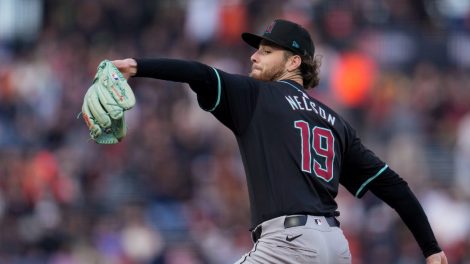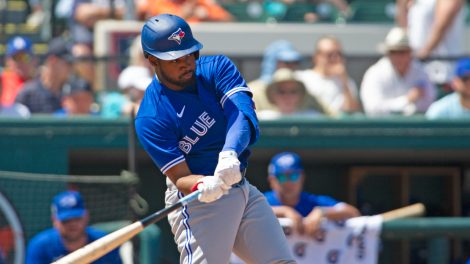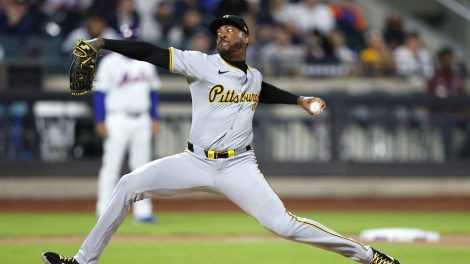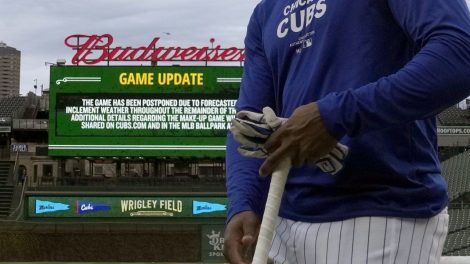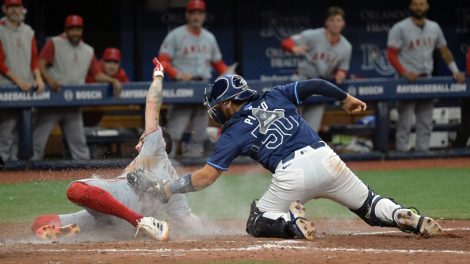Regardless of where one falls on how Mark Shapiro got to this point, it’s clear that the Toronto Blue Jays will conform to his vision going forward. The pertinent question is what exactly that vision will look like, and the two-time Sporting News Executive of the Year’s lengthy track record with the Cleveland Indians gives some insight into the path the Blue Jays might take.
Before delving into Shapiro’s past it’s important to realize that his moves at the helm of the Indians existed in the context of a small market where resources were severely limited. That fact doesn’t excuse the poor seasons the team had at times, it simply explains the type of moves they made most often.
Although Shapiro inherited the ninth‐highest payroll in baseball when he took over as the Indians’ general manager, he took on an aging team at the end of its competitive window and was forced to sell. In 2003, his second season, payroll dropped to 26th in the league and never again rose above 15th.
As a result of these restrictions he rarely participated in free agency, but it’s hard to know if that relates more to Shapiro’s personal philosophies or his circumstances. It’s worth noting his biggest free agent signings (Nick Swisher and Michael Bourn) did not work out, but his record with other forms of team building proved more successful.
Above all else Shapiro is probably best known for what he’s done in trades. The Indians often found themselves as sellers and their front office in recent years seemed to have an uncanny ability to identify undervalued prospects on other teams.
Their most famous deal obtained Brandon Phillips, Grady Sizemore and Cliff Lee from the Montreal Expos in exchange for Bartolo Colon in 2003. It was a heist for the ages, but those players ranked 1st, 3rd and 11th among Expos prospects according to Baseball America so the haul was expected to be good, if not historically so.
More interesting is Shapiro’s ability to consistently hit on unheralded young players. The chart below shows that some of the key contributors the Indians picked up in trades weren’t highly-ranked prospects at the time.
| Player | Year | Team | Pre-season Baseball America rank for that team | WAR with Indians |
|---|---|---|---|---|
| Coco Crisp | 2002 | St. Louis Cardinals | #18 | 8.8 |
| Travis Hafner | 2002 | Texas Rangers | #16 | 25.0 |
| Shin-Soo Choo | 2006 | Seattle Mariners | #7 | 21.7 |
| Michael Brantley | 2008 | Milwaukee Brewers | #24 | 16.8 |
| Carlos Santana | 2008 | Los Angeles Dodgers | #25 | 18.1 |
| Corey Kluber | 2010 | San Diego Padres | Not Ranked (#29 in ’07) | 12.4 |
| Yan Gomes | 2012 | Toronto Blue Jays | Not Ranked | 8.7 |
It’s not like there weren’t some whiffs. The Indians gave up on Phillips too soon and Chris Archer got away for Mark DeRosa, but overall the Indians were on the right side of most trades. The ability of the Shapiro-run Indians to regularly acquire and develop underrated prospects from other teams was quite remarkable.
Based on this success with identifying young talent one would assume Shapiro’s drafting would match his trading. If it did the Indians might have made more than two playoff runs during his tenure.
Since 2002 the team has had 22 first-round picks, including supplemental round choices. Of those players, 10 have cracked the major leagues and only three managed 162 games at the highest level. The choice of Francisco Lindor in 2011 sweetens the pot and the jury is still out on some of the more recent picks, but the overall picture is still ugly. Looking below the first round Jason Kipnis and Cody Allen were major finds in 2009 and 2011, but the rest of the 14 drafts are pretty thin.
In terms of international free agency, Shapiro has done as about as well as most. While he’s found major contributors like Danny Salazar and Jose Ramirez there have been more misses than hits. He has shown an adventurous streak however, signing Taiwanese pitcher C.C. Lee after a strong World Baseball Classic in 2009.
All of this information shows that the Shapiro-led front office in Cleveland had its strengths, but was far from perfect. The new Blue Jays president has a history of pulling off big moves and identifying talent where others failed to see it. He has also drafted poorly at times and his limited experience in free agency has not been fruitful. This mixed bag has resulted in a 1100-1157 record.
Shapiro may have done better with a bigger budget, and having more resources at his disposal was undoubtedly part of the appeal of coming to Toronto. But while he is certainly accomplished, his work so far is not above reproach.

